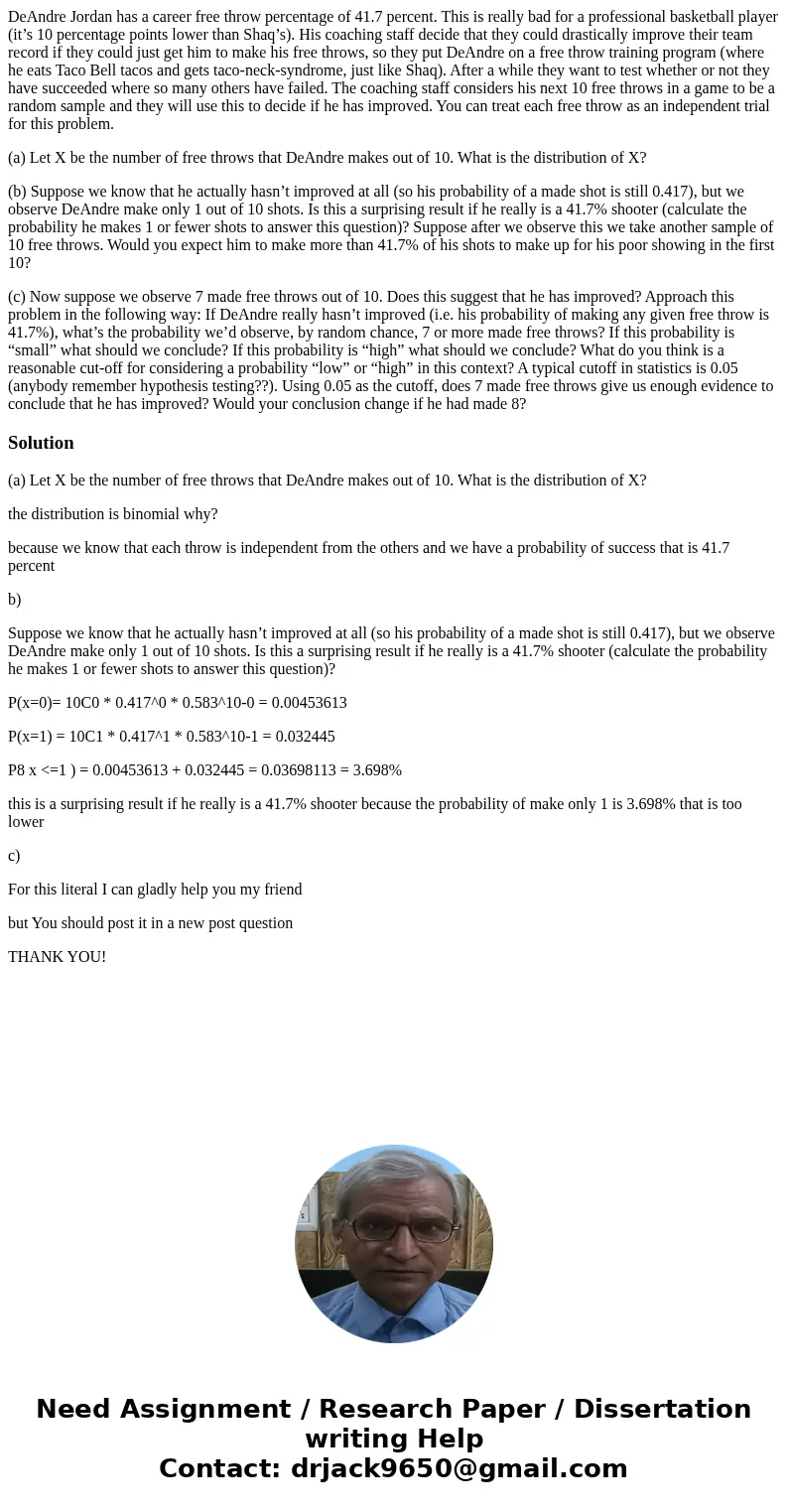DeAndre Jordan has a career free throw percentage of 417 per
DeAndre Jordan has a career free throw percentage of 41.7 percent. This is really bad for a professional basketball player (it’s 10 percentage points lower than Shaq’s). His coaching staff decide that they could drastically improve their team record if they could just get him to make his free throws, so they put DeAndre on a free throw training program (where he eats Taco Bell tacos and gets taco-neck-syndrome, just like Shaq). After a while they want to test whether or not they have succeeded where so many others have failed. The coaching staff considers his next 10 free throws in a game to be a random sample and they will use this to decide if he has improved. You can treat each free throw as an independent trial for this problem.
(a) Let X be the number of free throws that DeAndre makes out of 10. What is the distribution of X?
(b) Suppose we know that he actually hasn’t improved at all (so his probability of a made shot is still 0.417), but we observe DeAndre make only 1 out of 10 shots. Is this a surprising result if he really is a 41.7% shooter (calculate the probability he makes 1 or fewer shots to answer this question)? Suppose after we observe this we take another sample of 10 free throws. Would you expect him to make more than 41.7% of his shots to make up for his poor showing in the first 10?
(c) Now suppose we observe 7 made free throws out of 10. Does this suggest that he has improved? Approach this problem in the following way: If DeAndre really hasn’t improved (i.e. his probability of making any given free throw is 41.7%), what’s the probability we’d observe, by random chance, 7 or more made free throws? If this probability is “small” what should we conclude? If this probability is “high” what should we conclude? What do you think is a reasonable cut-off for considering a probability “low” or “high” in this context? A typical cutoff in statistics is 0.05 (anybody remember hypothesis testing??). Using 0.05 as the cutoff, does 7 made free throws give us enough evidence to conclude that he has improved? Would your conclusion change if he had made 8?
Solution
(a) Let X be the number of free throws that DeAndre makes out of 10. What is the distribution of X?
the distribution is binomial why?
because we know that each throw is independent from the others and we have a probability of success that is 41.7 percent
b)
Suppose we know that he actually hasn’t improved at all (so his probability of a made shot is still 0.417), but we observe DeAndre make only 1 out of 10 shots. Is this a surprising result if he really is a 41.7% shooter (calculate the probability he makes 1 or fewer shots to answer this question)?
P(x=0)= 10C0 * 0.417^0 * 0.583^10-0 = 0.00453613
P(x=1) = 10C1 * 0.417^1 * 0.583^10-1 = 0.032445
P8 x <=1 ) = 0.00453613 + 0.032445 = 0.03698113 = 3.698%
this is a surprising result if he really is a 41.7% shooter because the probability of make only 1 is 3.698% that is too lower
c)
For this literal I can gladly help you my friend
but You should post it in a new post question
THANK YOU!

 Homework Sourse
Homework Sourse